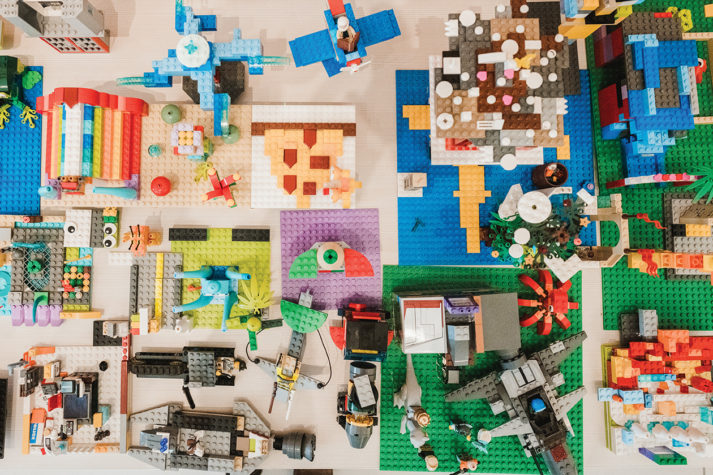MHD Kids Build
If you give a kid some Legos, they’re going to start building—it’s inevitable, much like death and taxes. With a blank base plate in front of them; a bucket of materials in every shape, color, and size readily accessible; and the endless ingenuity that comes with youth, their creative possibilities are nearly infinite.
At the first MHD Kids Build in November, a new event series celebrating the imaginative minds of designers of all ages across the state, Maine Home+Design teamed up with Knickerbocker Group and the Portland Society for Architecture for an afternoon of kid-friendly fun and creativity at Maine Beer Company. We invited builders, architects, and designers from across the state, plus their families, to let their imaginations run wild and create structures of all shapes and sizes from the more than 11,207 Legos provided (in addition to some larger Duplo bricks for the little ones). Brick by brick, the iconic children’s toy—which celebrated its 90th birthday last year—turned toddlers into builders, teens into architects, and adults into engineers.
What is it about Legos that ignites our desire to play? Godtfred Kirk Christiansen, son of Lego inventor Ole Kirk Kristiansen [who tended to prefer the “K” spelling], said it best in a 1955 note to his sales team around the time the iconic blocks launched on the market: “Our idea has been to create a toy that prepares the child for life, appealing to its imagination and developing the creative urge and joy of creation that is the driving force in every human being.” The other idea behind the toy’s invention, of course, was its cohesive, interconnected system, which Kristiansen designed after a 1954 trip to the London Toy Fair when he noticed how frustrated users became when their structures fell apart. In addition to creating Lego’s patented stud-and-tube configuration, the Danish woodworker laid out Lego’s core “Principles of Play,” a pseudo Bill of Rights for the beloved system of blocks that would go on to win multiple Toy of the Year awards. Kristiansen intended for Lego bricks to be limited in size without setting limitations on imagination; they would be affordable, simple, durable, and offered in rich variations; they would be made for both girls and boys at every age; they would have no need of renewal; and they would be easy to distribute.
For this MHD Kids Build, free-form play was key—no prompts were offered, so participants were left to their own devices to brainstorm and subsequently invent unique structures. While a few young designers took a more classic route and built extravagant homes (one even had a smattering of snow on top), another participant let their creativity soar—quite literally—by engineering a colorful airplane with a multitasking pilot who flew the aircraft while simultaneously reading a book. Following the Principles of Play, children of all genders, backgrounds, and socio-economic statuses tapped into their creative joy for a few hours, covering the once-empty tables of Maine Beer Company’s second-floor loft with fantastical structures designed from scratch.
Although Legos may look and feel like toys, the colorful little bricks are extraordinary tools for learning. By combining curiosity and experimentation with logic and reasoning, children (and adults, too) can dream up magnificent ideas and translate them into real-life objects. Building and consequently unbuilding allows users to refine, rethink, and redesign their creations, developing new observations and insights about the world along the way.









